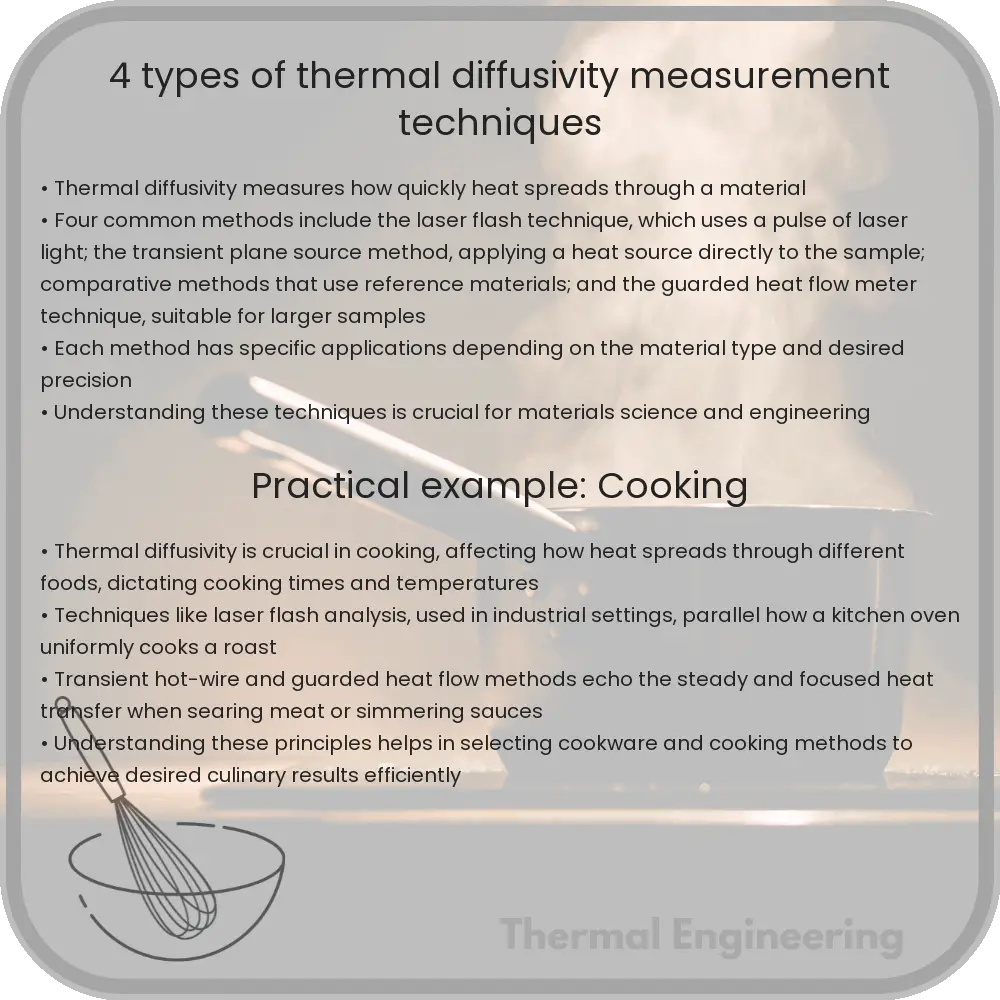Learn about thermal diffusivity, a key property that describes how fast heat spreads through materials, influencing design in manufacturing and other industries.

Understanding Thermal Diffusivity Measurement Techniques
Thermal diffusivity is a critical property of materials that describes the rate at which heat spreads through a material. It combines thermal conductivity, density, and specific heat capacity into a single parameter, which is essential in fields such as manufacturing, construction, and electronics. Accurately measuring thermal diffusivity is crucial for predicting how materials behave under thermal stress and for designing materials with specific heat management properties. Here are four common techniques used to measure the thermal diffusivity of various materials.
1. Laser Flash Analysis (LFA)
Laser Flash Analysis is the most widely used method for measuring thermal diffusivity, especially for solids. In LFA, a short laser pulse heats the surface of a small sample disc. The increase in temperature on the opposite face of the disc is monitored using an infrared detector. The half-time (t1/2), the time it takes for the rear face temperature to reach half of its maximum value, is critical in determining the thermal diffusivity using the formula:
\[ D = \frac{0.1388 \times d^2}{t_{1/2}} \]
where D is the thermal diffusivity, d is the thickness of the sample, and \( t_{1/2} \) is the half-rise time. This technique is favored for its speed and its applicability to a wide range of temperatures.
2. Transient Plane Source (TPS)
The Transient Plane Source, also known as the “hot disk” method, involves a sensor that acts both as a heat source and as a temperature recorder. This sensor is sandwiched between two pieces of the sample material. When heat is applied, the sensor records the increase in temperature over time, which is then used to calculate the thermal diffusivity. The primary equation used in TPS is:
\[ D = \frac{\alpha}{C_p \times \rho} \]
where D is thermal diffusivity, \(\alpha\) is thermal conductivity, \(C_p\) is specific heat capacity, and \(\rho\) is density. The TPS technique is advantageous due to its ability to measure both anisotropic and isotropic materials and its non-destructive nature.
3. Transient Hot-Wire (THW) Method
In this method, a thin wire, usually made of platinum, acts as both the heat source and the temperature sensor. The wire is embedded within the material, and an electric current is passed through to heat it. The temperature increase is then monitored over time, and the thermal diffusivity is calculated based on the rate of temperature change in the material surrounding the wire. The thermal diffusivity is given by the relation:
\[ D = \frac{q}{4\pi \Delta T(t) \ln(t)} \]
where \( q \) is the power per unit length of the wire, \( \Delta T(t) \) is the change in temperature at time \( t \), and \( \ln(t) \) is the natural logarithm of the time. This method is suitable for fluids and high-conductivity materials.
4. Differential Scanning Calorimetry (DSC)
Differential Scanning Calorimetry measures how much heat is required to increase the temperature of a sample compared to a reference under controlled conditions. It allows for the determination of specific heat capacity, from which thermal diffusivity can be indirectly calculated using the formula:
\[ D = \frac{k}{\rho \times C_p} \]
Here, k is the thermal conductivity, \( \rho \) is the density, and \( C_p \) is the specific heat capacity of the material. DSC is particularly useful for polymers and other complex materials where specific heat capacities are important for understanding thermal behavior.
Each of these techniques has its own advantages and limitations and is suited to different types of materials and conditions. Understanding the nature of the material and the specific requirements of the application helps in selecting the most appropriate method for measuring thermal diffusivity.